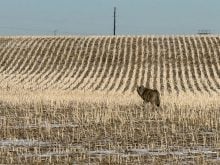For export-savvy Australia, the world is its marketplace, gained through free trade agreements and a take-no-prisoners attitude in negotiations.
As more bilateral agreements are written between Australia, Mexico, China and Malaysia, countries like Canada are conspicuous by their absence.
Canada may not get into as many free trade agreements because the government is not willing to put the supply managed system for dairy and poultry on the table.
“We would need to have every sector on the table,” said Elizabeth Peak, first secretary of the Australian high commission in Ottawa. She explained the Australian approach to trade at the recent Canada Beef Export Federation annual meeting in Calgary.
Read Also

Agritechnica Day 2: The future of tractor power, building quicker crop apps and large farms and tech
Agritechnica Day 2: The future of tractor power, building quicker crop apps with Syngenta and large farms and tech
In the last 15 years, Australia has developed an export culture because its small domestic market can’t match its ability to produce large amounts of commodities and finished consumer goods.
Every negotiation is meant to get access and maintain gains through bilateral agreements as well as through the World Trade Organization, she said.
“The WTO and an ambitious outcome to the Doha agenda is Australia’s No. 1 trade priority,” she said.
“The bottom line for us in the WTO is to create real opportunities for all our exporters,” she said.
It is a market worth saving.
Australia posted record exports in 2006 worth $190 billion, up 16 percent from the year before.
Meat and livestock are among the strongest agriculture exports at $4.2 billion, even though the country still suffers the effects of the worst drought in memory.
Continued strong demand for Australian products remains in the United States, the European Union and Asia because they are all enjoying strong economic health.
“That means more income, more discretionary income and more money to spend on our products,” she said.
Peak further attributes Australia’s success to strong partnerships built between government and industry through a national trade advisory council. All sides are consulted in international negotiations because they all want the same thing.
“Australian government and industry certainly approach our exporting and trade profiles with a partnership approach,” she said.
Other national partnerships include a red meat advisory council that includes producers, processors, exporters and government. National standards to deliver safe and hygienic meat are managed through Safe Meat Australia.
Another group is promoting the Australian Grown label, a new initiative launched two months ago to promote all agriculture products in all world markets.
The government also has overseas posts where staff is encouraged to get to know foreign industries and their politics. It also works through international groups like the Asia-Pacific Economic Co-operation.















